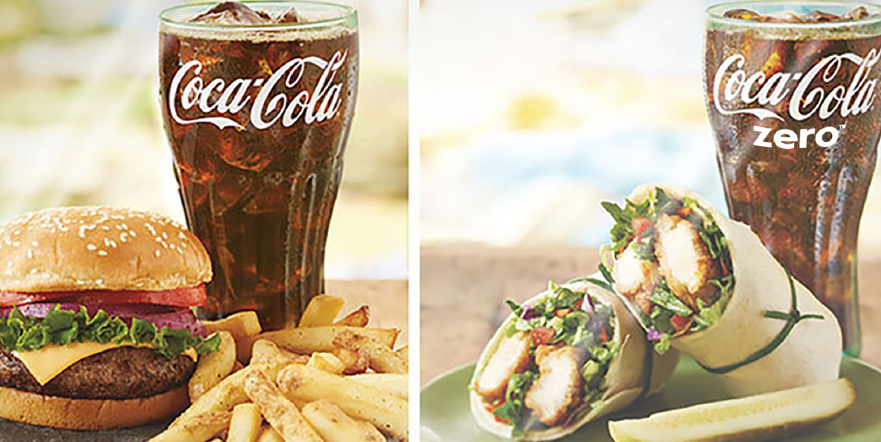
Menu Boards Drive Bundled Meal Volume
These QSRs have figured out how to boost combo-meal sales

Although combo meal sales have been declining at quick-service restaurants, some operators have defied this trend.
Examining the traits that set these restaurants apart yields actionable insights for the rest of the playing field.
Among the tactics these successful operators deploy is the effective merchandising of combo meals on menu boards, with clear messaging to consumers whether they are ordering at the drive-through or inside the restaurant.
“What we have found is that if everything is merchandised correctly and neuromarketing principles are applied, there is an increase in combo incidence,” says Monica McCoy, senior manager of Channel Planning and Development, The Coca-Cola Company.
McCoy was citing results from The Company’s best-in-class marketing research.
“Even though combo incidences have declined in QSRs overall, there are a number of QSR chains that are actually outperforming,” she says. “The key is, what are they doing right?”
These operators who excel at driving combo-meal sales tend to have several things in common when it comes to menu-board merchandising, including the use of high-quality photos showing complete combo meals.
“Text descriptions alone of combo meals do not drive sales as effectively as menu boards containing high-quality images of the complete meal,” McCoy says.
In addition, the actual placement of the products within the photo displays is crucial. The meal should be shown with the beverage to the right of the food items, and the specific beverage shown should vary among the different meals depicted. One meal might show a traditional Coca-Cola fountain beverage, for example, while another shows a Sprite fountain beverage.
The menu board display also needs to emphasize the combo meal price, allowing customers to readily see the value of ordering a bundled option.
Keep It Simple
Overall, the menu board needs to be as simple as possible, so customers can scan their options quickly and make a decision without having to sort through excess clutter. “Customers must be able to make a decision within 30 seconds,” McCoy says.
These display principles must be consistently applied across the menu board, and both in-store and in the drive-through lanes, to drive the most success.
“If there is strong consistency with the concepts, vision, goals and positioning, this will ensure that combo incidence is driven,” McCoy says. “If there’s clutter on the menu boards, that adds to confusion. There needs to be clarity around how to easily order a combo.”
Operators also must keep in mind the importance of the beverage to the offering. “More than two-thirds of QSR customers — 68 percent — are motivated by the desire for immediate consumption of a beverage,” McCoy notes, citing Coca-Cola customer research.
Drive-through menu boards that lack imagery displaying all of the features of the full combo meal, or that are too cluttered for the customer to scan quickly, could be contributing to suboptimal sales at these venues by not responding to consumers’ desire for immediate consumption of beverages, according to McCoy.
“Operators need to have crisp, clean images to drive thirst appeal, and product imagery that stimulates appetite,” McCoy says. “We have to make sure we are appealing to those need states.”
Promoting Customization
As part of the company’s effort to bolster combo-meal sales, The Company is providing critical insights to their customers regarding the “Combo of the Future,” which would allow guests to customize their combo meals by selecting from a choice of various side items. Customers could substitute a side salad or yogurt in place of fries, for example.
“Efforts like this require more training of staff and clear messaging at the point of sale,” McCoy explains.
For example, the combo-meal imagery needs to include one specific side item, even though the customer has multiple choices. In addition, messaging about the guests’ ability to customize their orders should be at the top of the menu board instead of at the bottom.
“It also needs to be very clear what the side options are,” McCoy says.
Staff training also is important to the success of such an initiative.
“The crew must be engaged in educating the consumer,” McCoy says. “Once the crew is engaged in educating the consumer about these combo options, then it will continue to gain traction.”
“We have to use our merchandising to get the consumer to buy the whole combo meal on premise,” McCoy says. “Our research shows that when merchandising is done correctly, it is going to drive the average check, and it does drive purchase incidence.”